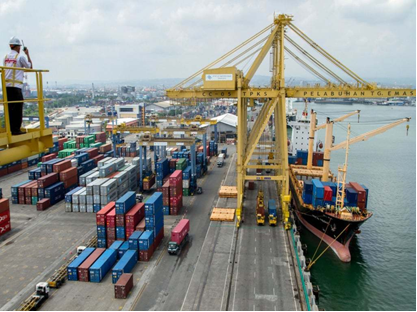INP-WealthPk
Farooq Awan
Pakistan’s import expenditure continued to rise sharply in October, driven by higher purchases of petroleum products, vehicles, industrial raw materials and other manufacturing inputs, according to the Monthly Trade Report for October 2025 released by the Trade Development Authority of Pakistan (TDAP). A breakdown of sector-wise imports for October reveals that other manufacturing products accounted for 4,235 million dollars, up from 3,336 million dollars last year, marking a rise of 27 percent.
Agro and food sector imports also increased, reaching 842 million dollars compared with 699 million dollars in the previous fiscal year, showing a growth of 20 percent. Imports of textile and leather-related inputs amounted to 479 million dollars during October, higher than 321 million dollars last year, reflecting an increase of 49 percent. For the four-month period from July to October of the current fiscal year, Pakistan’s import bill reached 23,030 million dollars, significantly higher than 20,003 million dollars in the same period last year, indicating a rise of 15.13 percent.
Sector-wise data for July–October shows that imports of other manufacturing products totaled 16,217 million dollars, up from 13,854 million dollars last year, representing an increase of 17 percent. Imports under the agro and food category amounted to 3,150 million dollars, compared with 2,455 million dollars a year earlier, showing an increase of 28 percent.
Textile and leather sector imports reached 1,520 million dollars in July–October compared with 1,049 million dollars in the corresponding period of the previous year, marking a rise of 45 percent. Country-wise import data for October indicates that China remained the largest source of imports, with shipments worth 1,636 million dollars, up 22 percent from 1,345 million dollars last year.
Imports from the United Arab Emirates rose sharply to 613 million dollars from 351 million dollars, showing an increase of 74 percent. Saudi Arabia also recorded a significant increase, with imports reaching 390 million dollars compared with 168 million dollars last year, reflecting a rise of 132 percent. Other major import partners showing growth included Indonesia, the United States, Singapore, Japan, Thailand, Oman, South Korea, Kuwait and Morocco.
The report lists several key import commodities that registered notable changes in October. Imports of petroleum oils other than crude amounted to 527 million dollars, up from 375 million dollars last year, marking a rise of 41 percent. Crude oil imports increased to 459 million dollars from 196 million dollars last year, showing a surge of 134 percent. Imports of petroleum gases, however, declined to 289 million dollars from 355 million dollars last year, reflecting a fall of 19 percent.
Passenger car imports saw a significant rise, reaching 155 million dollars compared with 59 million dollars a year earlier, indicating an increase of 162 percent. Imports of semiconductor devices more than doubled to 100 million dollars from 44 million dollars last year. For the July–October period, major increases were recorded in imports of soybeans, motor vehicles, palm oil, cotton, steel products, and several industrial chemicals.
Crude oil imports for the four-month period stood at 1,767 million dollars compared with 1,444 million dollars last year, showing a rise of 22 percent, while refined petroleum imports reached 1,875 million dollars, up from 1,701 million dollars. The figures reflect sustained demand for industrial, manufacturing, food and energy-related imports during the month and the cumulative four-month period.

Credit: INP-WealthPk












